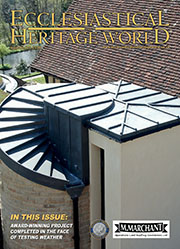Wigan Municipal Buildings
 Integrating a modern, multi-use municipal facility with a Grade II listed, historically sensitive site was never going to be a simple task. During a large-scale redevelopment of Wigan’s main civic premises, the existing and much-loved iconic terracotta street facade was retained, with Shaws of Darwen selected as a vital part of the professional team to carry out this sensitive work.
Integrating a modern, multi-use municipal facility with a Grade II listed, historically sensitive site was never going to be a simple task. During a large-scale redevelopment of Wigan’s main civic premises, the existing and much-loved iconic terracotta street facade was retained, with Shaws of Darwen selected as a vital part of the professional team to carry out this sensitive work.
Chester City Walls to create leading european heritage trail
 Two thousand years of Chester’s rich and colourful history have been earmarked to create one of Europe’s finest heritage trails.
Two thousand years of Chester’s rich and colourful history have been earmarked to create one of Europe’s finest heritage trails.
Chester’s famous City Walls – the only complete circuit in the UK – have recently been given an asset value £0.5 billion….. but could well be worth much more to the city in the future.
Read more: Chester City Walls to create leading european heritage trail
Don’t replace- renovate your period windows
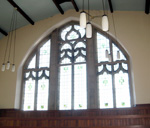 Making a building more comfortable, warm and efficient is far from easy especially when you have a period property. Single Glazed windows are a major contributor to heat loss. Compensating for this is not only costly but requires more energy consumption and therefore greater carbon emissions.
Making a building more comfortable, warm and efficient is far from easy especially when you have a period property. Single Glazed windows are a major contributor to heat loss. Compensating for this is not only costly but requires more energy consumption and therefore greater carbon emissions.
Resources show heads north
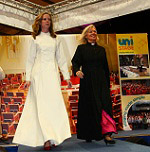 October sees the next manifestation of the CRE, the major national exhibition of everything for a church organisation: this time in Manchester. Christian Resources Exhibition North takes place at EventCity on 10-11 October and will pack into two days a wealth of events and showcases for church leaders, organisers, communicators and mission leaders. On show will be furniture, books, music and instruments, software, hardware, plate and even vestments.
October sees the next manifestation of the CRE, the major national exhibition of everything for a church organisation: this time in Manchester. Christian Resources Exhibition North takes place at EventCity on 10-11 October and will pack into two days a wealth of events and showcases for church leaders, organisers, communicators and mission leaders. On show will be furniture, books, music and instruments, software, hardware, plate and even vestments.
Authentic natural materials are less harmful to the environment...
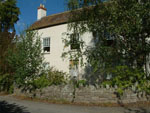 In every field, materials are chosen according to requirement – managers, designers, specifiers and tradesman never just blindly ignore the properties of those materials in their selection – except it seems, in the building industry. We have been suggesting for many years that traditional building materials are, by their nature, ecological.
In every field, materials are chosen according to requirement – managers, designers, specifiers and tradesman never just blindly ignore the properties of those materials in their selection – except it seems, in the building industry. We have been suggesting for many years that traditional building materials are, by their nature, ecological.
Read more: Authentic natural materials are less harmful to the environment...
Woodexperts integral to windmill’s longevity
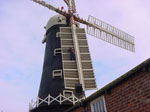 Skidby Windmill, situated near to Beverley in the East Riding of Yorkshire, is said to be England’s most northerly working windmill, and the only one north of the Humber. About 25 years ago, there was a near-fatal catastrophe, when one of the sail beams broke off during milling, on a Bank Holiday afternoon, and crashed through the roof of the adjoining building, which was full of tourists!
Skidby Windmill, situated near to Beverley in the East Riding of Yorkshire, is said to be England’s most northerly working windmill, and the only one north of the Humber. About 25 years ago, there was a near-fatal catastrophe, when one of the sail beams broke off during milling, on a Bank Holiday afternoon, and crashed through the roof of the adjoining building, which was full of tourists!
Historic village church has heaters powered from underground LPG tank
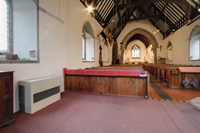 St Peter’s in Hixon, Staffordshire is a Grade 2 listed rural church dating from 1849. It was designed by the renowned Victorian architect Gilbert Scott and is part of the Mid-Trent diocese.
St Peter’s in Hixon, Staffordshire is a Grade 2 listed rural church dating from 1849. It was designed by the renowned Victorian architect Gilbert Scott and is part of the Mid-Trent diocese.
As part of a major refurbishment programme, DRU has supplied Kamara powered flue gas wall heaters, replacing old and inefficient overhead electric heaters.
Read more: Historic village church has heaters powered from underground LPG tank
Two new products launched by Chris Topp & Co
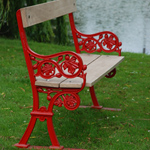 Chris Topp & Co are best known as leaders in this country of heritage iron work restoration – but they are keen to be recognised as designers and creators of new ironwork.
Chris Topp & Co are best known as leaders in this country of heritage iron work restoration – but they are keen to be recognised as designers and creators of new ironwork.
They have just launched a railing system - Carltonia.
New crafts heritage training centre reaches anniversary
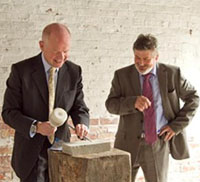 On Friday 9th September 2011 Heritage Crafts Alliance, the heritage skills training centre at Thorp Perrow, North Yorkshire was formally opened by the Rt Hon William Hague MP.
On Friday 9th September 2011 Heritage Crafts Alliance, the heritage skills training centre at Thorp Perrow, North Yorkshire was formally opened by the Rt Hon William Hague MP.
The Rt Hon William Hague MP tries stone carving under the watchful eye of Heritage Craft Alliance MD Glenn Young
Read more: New crafts heritage training centre reaches anniversary
New cafe for St Martin-in-the-Fields
 Platform 5 Architects have won planning consent for a new temporary outdoor cafe for St Martin-in-the-Fields in central London. The new kiosk is due to open April 2013. A set of images can be downloaded at http://goodfellowcommunications.dphoto.com/album/4d014h.
Platform 5 Architects have won planning consent for a new temporary outdoor cafe for St Martin-in-the-Fields in central London. The new kiosk is due to open April 2013. A set of images can be downloaded at http://goodfellowcommunications.dphoto.com/album/4d014h.
The new cafe will be sited the east courtyard of St Martin’s - one of the most sensitive sites in central London next to one of the most famous churches in the world.
Meare Close House’s renovation
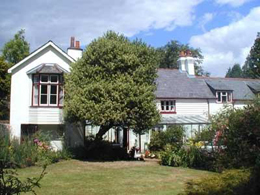 The original part of the house is reputed to date from the 1580s with major Victorian Gothic restyling in 1851. Modernisation took place in the 1930s and extension during the 1950s. Adjacent, though now forming a wing of the house, is what was formerly a two storey Victorian cottage. For over the last 70 years, the house has been owned and lived in by three generations of one family.
The original part of the house is reputed to date from the 1580s with major Victorian Gothic restyling in 1851. Modernisation took place in the 1930s and extension during the 1950s. Adjacent, though now forming a wing of the house, is what was formerly a two storey Victorian cottage. For over the last 70 years, the house has been owned and lived in by three generations of one family.
The advantages of being accredited
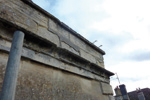 by M C HALL FRICS IHBC Pg Dip Cons: Historic Buildings. RICS Accredited.
by M C HALL FRICS IHBC Pg Dip Cons: Historic Buildings. RICS Accredited.
After lobbying by a group of forward thinking surveyors, accreditation was introduced for chartered surveyors as well as architects. Surveyors have now been recognised by the ecclesiastical bodies in England for about 20 years.
HMG Adhesives help preserve our cultural heritage
 It’s the nature of all materials to degrade and deteriorate over time. But specialist products from British surface coatings manufacturer HMG are dedicated to preserving these materials at both ends of the natural cycle. Its anti-corrosive primers, preservative wood treatments, weather-resistant masonry paints and high performance coatings help protect them against abrasion, wear, chemical and environmental attack;
It’s the nature of all materials to degrade and deteriorate over time. But specialist products from British surface coatings manufacturer HMG are dedicated to preserving these materials at both ends of the natural cycle. Its anti-corrosive primers, preservative wood treatments, weather-resistant masonry paints and high performance coatings help protect them against abrasion, wear, chemical and environmental attack;
Read more: HMG Adhesives help preserve our cultural heritage









